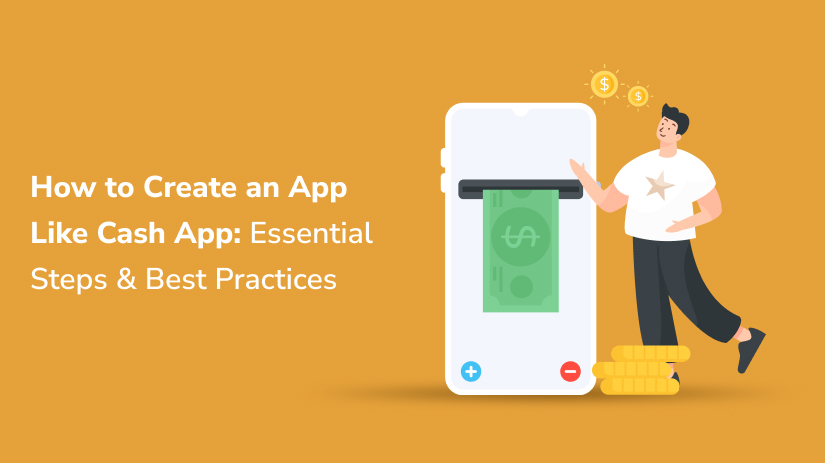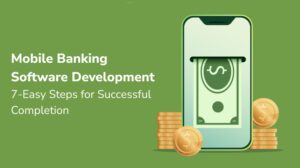In today’s digital age, mobile payment apps like Cash App have revolutionized how we handle transactions. Creating an app like Cash App involves a blend of innovative features, robust security measures, and user-friendly design.
If you’re looking to develop a similar application, whether for personal use, business purposes, or as fundraising software for nonprofits, this guide will walk you through the essential steps and best practices.
Understanding the Basics
Before diving into the technical details, it’s crucial to understand the fundamental components and functionalities of an app like Cash App:
- User Registration and Authentication: Users should be able to sign up using their email, phone number, or social media accounts. Implement strong authentication methods to ensure user security.
- Linking Bank Accounts: Allow users to link their bank accounts or credit/debit cards securely.
- Sending and Receiving Money: The core functionality, enabling users to transfer money to each other seamlessly.
- Transaction History: Provide a detailed history of all transactions for transparency.
- Notifications: Send notifications for successful transactions, failed transactions, and promotional offers.
- Security Features: Implement encryption, two-factor authentication, and fraud detection mechanisms.
Connect with us for Fintech Development Needs
Trusted by companies like Plaid, Yodlee, Codat.
Step-by-Step Guide to Developing a Payment App
1. Market Research and Planning
Before you start development, conduct thorough market research. Identify your target audience, understand their needs, and study your competitors. This will help you define your app’s unique value proposition and essential features.
2. Partner with a Payment Software Development Company
Collaborate with a reputable payment software development company. They will provide the technical expertise and experience needed to build a secure and efficient payment app. Ensure they have experience in fintech and can adhere to financial regulations.
3. Define Features and Design
List out all the features your app will have. Start with the MVP (Minimum Viable Product) – basic functionalities that address the primary needs of your users. Work on a user-friendly design that is intuitive and accessible.
4. Develop the Backend
The backend is the backbone of your app. It handles all transactions, data storage, and security measures. Choose a robust technology stack and ensure your backend can scale as your user base grows.
5. Create the Frontend
Develop a clean and responsive frontend that provides an excellent user experience. The UI/UX design should be simple, making it easy for users to navigate through the app.
6. Implement Security Measures
Security is paramount in a payment app. Implement advanced security measures such as end-to-end encryption, biometric authentication, and regular security audits. Compliance with financial regulations like PCI DSS is essential.
7. Testing
Conduct rigorous testing to identify and fix any bugs or vulnerabilities. Perform both automated and manual testing to ensure the app runs smoothly under various conditions.
8. Launch and Marketing
Once your app is ready and tested, launch it on the relevant app stores. Develop a comprehensive marketing strategy to attract users. Utilize social media, influencer marketing, and SEO to increase visibility.
9. Gather Feedback and Improve
After launch, gather user feedback and make necessary improvements. Regularly update the app with new features and security patches to keep your users satisfied and secure.
Best Practices for Developing a Payment App
- Prioritize Security: Ensure all data is encrypted and secure. Implement robust authentication mechanisms.
- User-Centric Design: Focus on a simple and intuitive user interface.
- Compliance: Stay updated with financial regulations and ensure your app complies with all necessary laws.
- Scalability: Design your backend to handle a growing number of users and transactions.
- Customer Support: Provide excellent customer support to assist users with any issues or queries.
Leveraging Your App for Nonprofits
If you’re developing fundraising software for nonprofits, integrate features like donation tracking, campaign management, and automated receipts. This will help nonprofits manage their funds efficiently and transparently.
Conclusion
Creating an app like Cash App requires careful planning, collaboration with a skilled payment software development company, and a focus on security and user experience.
By following these steps and best practices, you can develop a successful and secure payment app that meets the needs of your target audience.
Whether for personal transactions or as fundraising software for nonprofits, your app can become a valuable tool in the digital financial ecosystem.
Embark on this journey with a clear vision and a dedicated team, and you’ll be well on your way to creating an app that stands out in the competitive market.
Connect with us for Fintech Development Needs
Trusted by companies like Plaid, Yodlee, Codat.





